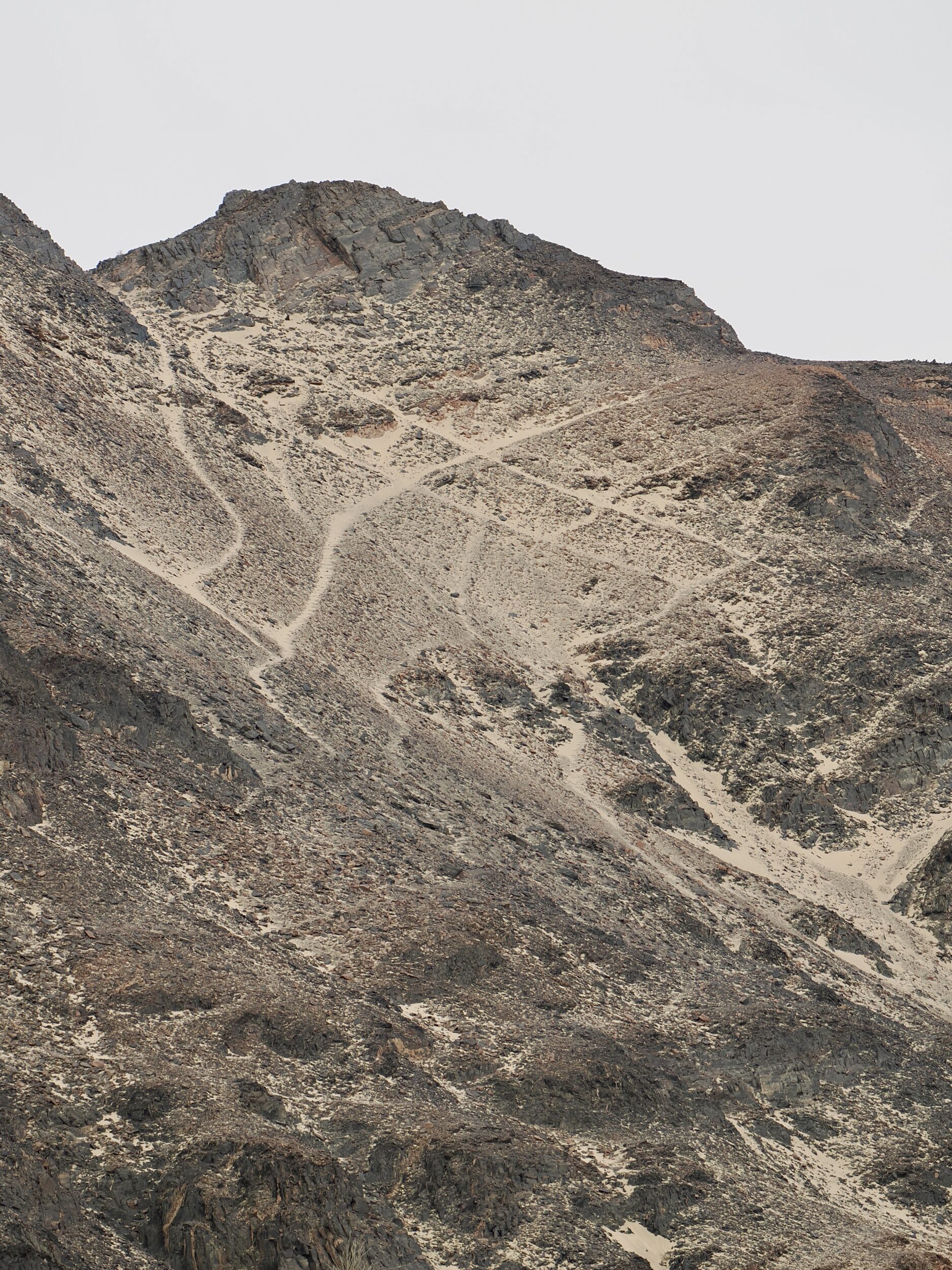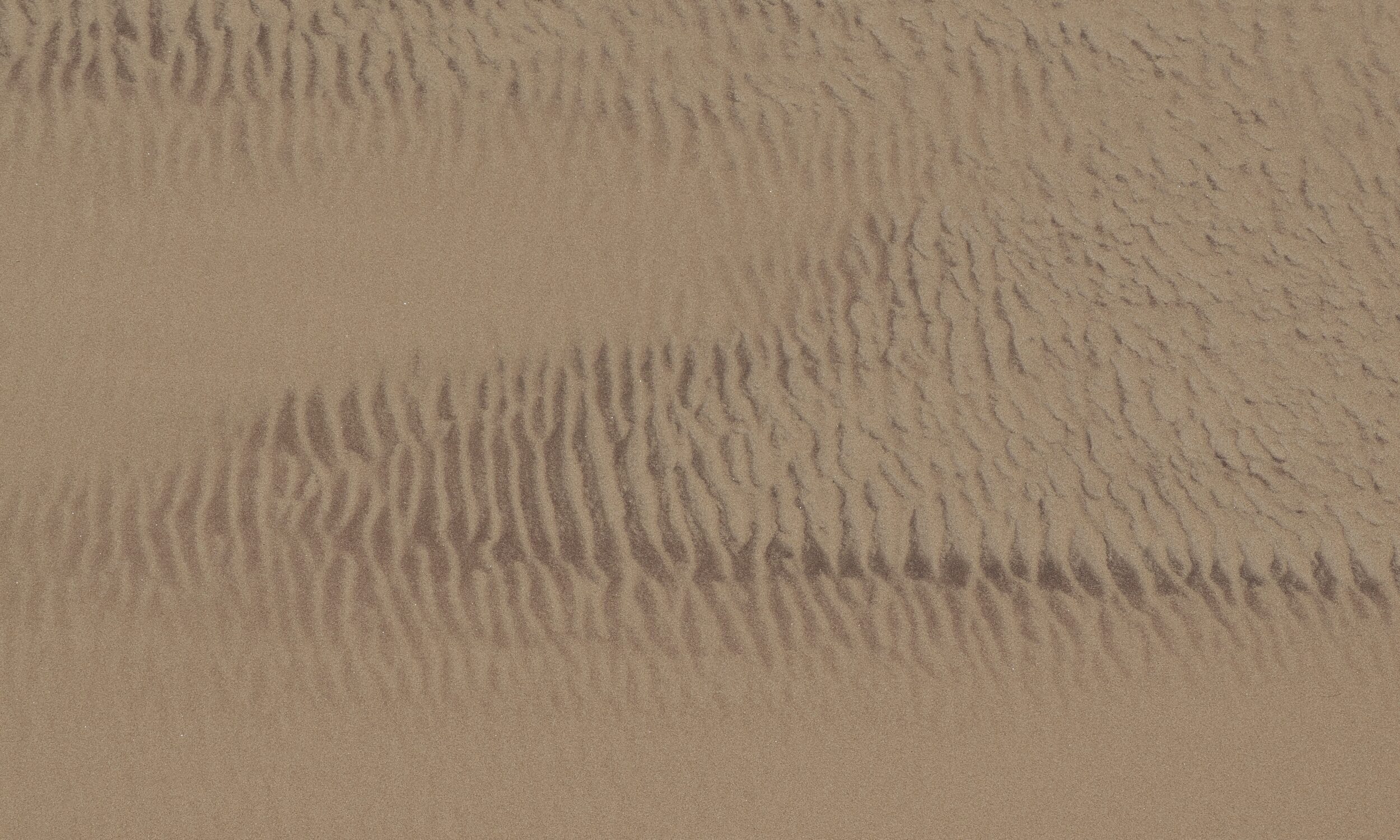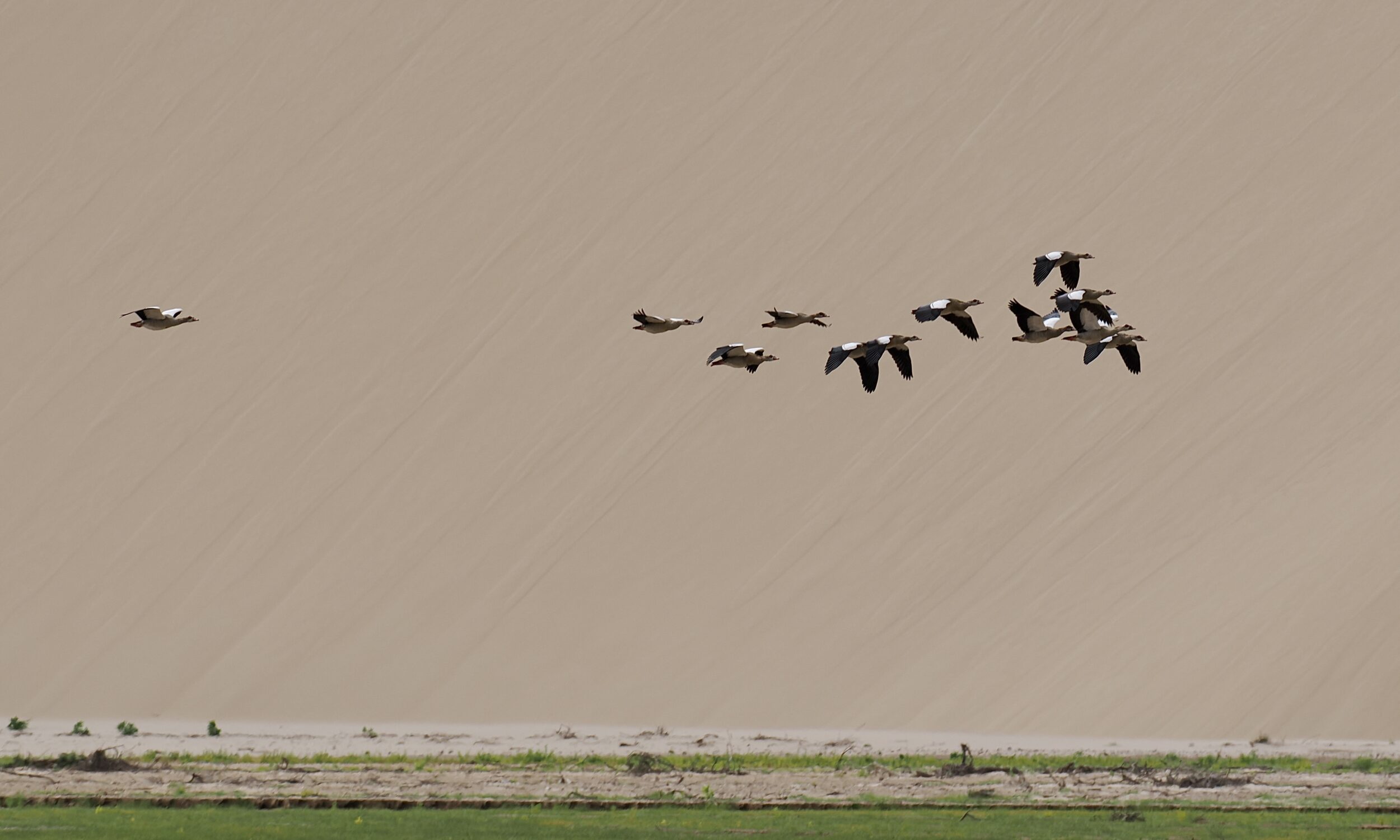All of this post’s photos were taken from the bed of the Hoarusib River, less than 20 kilometres from where it (on occasion) meets the Atlantic Ocean.
Here, rainfall is a very rare event.
The featured image shows ducks flying along a river; most of the time, terrestrial animals can walk across the lower reaches of the Hoarusib without wetting their feet.
The ducks’ presence is much less “surprising” than most people imagine.
Above, you are looking at Egyptian geese, Alopochen aegyptiaca; these so-called “geese” are in fact ducks.
They are found in many parts of Sub-Saharan Africa, mostly in arid and semi-arid regions.
Desert regions are often rich in birdlife, water birds included.
Still, the sand dune behind the ducks looks “right”; it accords with common preconceptions of what a desert “should” look like.
I took the photo below just two minutes earlier, looking up to what towered above the river’s other side.
My feet remained dry.

Yes, some windblown sand had landed on the pictured slopes, but you are looking at a rocky hill, not a dune.
Contrary to common misconception, deserts are often far from “monotonous”.
They are certainly not “lifeless”.
With a single exception, this series’ photos were all taken on the same day.
(the “single exception” will show you the only place to stay in this highly-protected part of the Namib…literally, the only accommodation available to visitors)
All vantage points were within 25 kilometres of our accommodation, no more than 10 kilometres away from the Hoarusib, and none was more than 20 kilometres distant from the Atlantic Ocean.
Even when one is looking at sand – and only at sand – the Namib delivers a lot of variety, and a deal of surprise.

Future posts will further illustrate how varied are the Namib’s dunes…and other landforms.
Eventually, I will try to explain why the surfaces of so many Namib dunes have such an unusually “variegated” look.
If you look carefully at the rippled sand in the picture above, you can see that its “light and dark” is clearly not simply a manifestation of sunlight and shadow.
